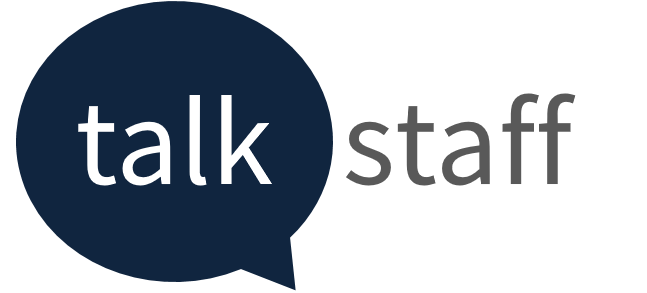Why L&D is your secret weapon in a cost-of-living crisis
- February 22, 2023
- Posted by: Hannah Ingram
- Categories: Organisational Culture, Pay, Reward & Benefits

Let us guess.
Your team is under pressure right now. You’re reeling from increased uncertainty with every department under strain. Not to mention that everyone is growing concerned about the looming recession.
It’s tempting to batten down the hatches and conserve costs at a time like this and L&D is no exception.
But the risk is, when you don’t grow as an organisation this leads to stagnation. Especially in a constantly changing market, where tech, people and world events are constantly evolving. And you need to evolve with it.
Failing to do so not only hits the profitability of your business in the long-term but has several short-term ramifications including losing great teammates to more enticing employers.
Explore free development sessions from our Designed4Success team
Why cutting your L&D budget is a bad idea
Cuts to your L&D budgets have consequences in the short and long term. Organisations often underestimate just how quickly L&D budgets can take their toll.
Here’s a reminder of 5 reasons Learning & Development is a hugely powerful too.
Staying up to date
When the world changes, you need to evolve with it. Keeping employees up-to-date increases their motivation and connects them more closely to company culture.
Not only do you need to keep them up-to-date on the latest industry trends and company news but technical and soft skills too. It’s easy for unused skills to fade making previous L&D activities obsolete if you’re not careful.
Creating a learning cycle
Learning works as exercise for the brain and the effect releases endorphins. In the same way that regular physical exercise can increase your desire to participate in more activity.
When you learn it drives you to develop your skills even further. If you are growing at home you are more likely to take this journey outside of the workplace and invest in yourself there too.
This means employees who receive growth at work are likely to collect further skills outside the workplace and add these to the pot.
Team Bond
When you invest in soft skills such as empathy, effective meetings and great feedback you give your team the tools to work well together which drives productivity and delivers results. For example as a result of growing soft skills:
- Increased confidence within your team to speak up to raise ways the business can improve rather than keeping these thoughts to themselves. These open conversations can improve efficiency in factory settings, reduce work accidents in manufacturing and prevent high levels of absence due to stress.
- More efficient and relevant meetings. This means productivity will be higher as well as job satisfaction. Whereas if people are regularly stuck in meetings not directly related to their role this impacts on their productivity during the day and wastes company resources. This also makes them feel less valued over time, lowers their motivation, and makes them more likely to seek out a more fulfilling role.
- Introverts will feel empowered to speak up in meetings creating powerful thinking through the diversity of ideas.
- Employees will communicate better and crave feedback rather than avoid it. When feedback adds to their skillsets rather than taking away their self-esteem this can increase productivity and results significantly.
These team influences are also very useful in remote or hybrid settings where relationships may take longer to form. Learning together generates conversation and collaboration.
Keep the team together
When you invest in your team both in terms of mental health and development, bonds grow stronger. This leads to better understanding and increases retention.
In businesses with a high employee turnover trust becomes difficult to build and it’s harder to create lasting relationships or hit company goals when new employees need onboarding. High turnover of employees also damages the overall cohesion of a team. In turn it’s tricky to attract talent if they see employees leaving, information that is easily accessible with a bit of online research or through word of mouth.
One reason people leave good jobs is due to lack of progression or growth, a shiny new title or huge pay rise may not be feasible in the current economic climate but investing in a person’s growth can make all the difference.
Grow a vision together
Employees do not automatically connect to company vision and culture; L&D allows you to build this together and make it matter on an individual level. Regular development also encourages innovative thinking.

Fighting against budget cuts at leadership level
You may have your work cut out for you if you’re looking to convince leaders to invest in L&D right now.
So getting your messaging right is key. Here’s 6 things to highlight to leaders:
Show them the money
Make sure that when you pitch L&D initiatives you talk about the benefits to the business in terms of profitability.
The power of attraction and retention
Talk about the risks of losing key people who will take their skills and knowledge with them. Not only is hiring new people expensive in terms of recruitment costs but due to rising pay scales it will cost more to recruit a teammate with a similar skillset. There is also the time lost in onboarding and business training to get them up to speed. This all adds up.
Make it matter to departments
Remember that it is not just senior leaders you need to sell too, think about the departmental heads and key influencers too. For example, would investing in the customer services team result in better brand loyalty by building soft skills such as empathy?
The long-term benefits
Remind them that L&D is not a short-term box-ticking exercise but a powerful solution that lends itself to business longevity. Starting sooner rather than later means quicker results and ROI.
High visibility with stakeholders
Don’t forget the external influences too. L&D leaders need to be highly visible to stakeholders. Keep them in the loop and make it relevant to them in a way that resonates.
L&D for leadership too
L&D works best when it’s applied at all levels of the business but in a personalised way. In fact it’s essential that leaders get development too.
For example, if you teach team members how to support each other and inspire trust but you don’t teach this at leadership level you could inadvertently cause the team to bond together, against the leaders who don’t understand them. This makes it harder to push new initiatives through from leaders to departments and stagnates progress as buy-in is low.
It’s also crucial that senior personnel lead by example, otherwise the collective team will lose faith in what they have been taught. They will look to leadership to see what they do and this ripples across the business.
Explore team development resources on age diversity, psychological safety and more
L&D for attraction and retention
Look back on why you moved jobs in the past. Chances are the driving forces weren’t just pay.
In fact, our marketing manager’s recent LinkedIn poll found that 47% of people left their last position due to a toxic culture, showing that soft skills matter more than first meets the eye.
L&D is also a vital factor for employees choosing their next role.
And with many hiring managers struggling to meet the budget expectations of new recruits against the rise of inflation, L&D is a clever way to stand out from the crowd.
As Gen Z and even Gen Alpha enter the workplace there is a growing demand for L&D. In addition, 59% of millennials, many of whom are now in senior positions say having opportunities to learn and grow are hugely significant in their job choice.
“84% of Gen Zers expect their employers to provide learning opportunities and are eager to learn new things in the work context.”
You need deep pockets to keep up these days, average regular pay growth for the private sector was 7.3% between October-December 2022.
A recent LinkedIn report states that hard skills can help you get a recruiter’s attention, but soft skills can help you land the job with communication being hugely important. More than 3 in 5 (61%) of professionals say soft skills in the workplace are just as important as hard skills.
Why pay increases is not always the right answer
It can be tempting to incentivise staff to stay through pay hikes, but this is likely to drive an aggressive pay battle between you and your competitors, to attract new talent, and leaves less budget to invest in your new hires as well as your existing people.
In addition, attracting through high pay is likely to cause resentment amongst your existing team if this is not matched.
The reward of resilience
The pressure of the looming recession is making things tense in the workplace and it isn’t just the financial side that is affected.
Prior to the pandemic resilience was higher because people were dealing with a lower level of underlying stress on average.
Since the pandemic and with today’s world of strikes, world events not to mention political and financial uncertainty we are now all coming to work with a higher level of stress.
Some of these ‘stressers’ in isolation are manageable but when these are layered on top of each other it builds, particularly when that stress becomes constant and consistent.
We’ve already used up some of our internal resources to deal with these stresses making us all closer to burnout.
Therefore, people need to feel empowered at work to combat this and it’s essential that their level of stress caused by work is minimised as much as possible.
Explore strategies for wellbeing at work

L&D budgets in 2023
So are people cutting L&D budgets in 2023?
Gary Parsons, our CEO, of Talk Staff Group says:
“We’re seeing the more progressive companies in our network invest more in L&D not less despite the economic situation and suspected recession.
This investment is happening both in terms of leadership development and across the boards within teams too. This can be hugely powerful at department level too.”
Organisations that choose to make cuts here during this vital stage will cause themselves problems with attracting and retaining top talent and these consequences are more short-term than many leaders think. Not to mention the future influence of these decisions.
This is a time when HR professionals can really shine with the opportunity to embrace both their own creativity and to think more strategically around the topic of knowledge sharing and team investment.
Can people already trained learn new mentorship skills by teaching others and by doing so actually built rapport internally too?
We find development matters more to employees than money. This is true even during a recession. Leaders are looking to build trust and resilience within their teams and investing in soft skills has far reaching effects on the bottom line of the business.
Creative ways to manage L&D without breaking the bank
Upskilling existing staff in small doses
Rather than going for expensive programmes opting for smaller options such as tailored sessions and picking a topic that works for your organisation can keep things moving in terms of personal growth. However nothing should be a nice to have and everything should be measurable afterwards. Pick topics that benefit teams and the business as a whole.
CIPD states that Upskilling is key and that nearly two-fifths of organisations (38%) are increasing efforts to meet their skills requirements by developing more talent in-house.
This also means that when you do need to grow your team this can accelerate the onboarding process through knowledge sharing.
Knowledge sharing
Consider developing influential members of your team, or ask your team if they want to volunteer, make it about them.
Before they are developed make it clear there is mentorship involved and set out a plan so that that knowledge gets passed on. For example they could present it during a hybrid working catch up or a monthly stand-up. It needs to be relevant to the audience.
Mentorship can also help employees feel empowered even when a promotion is not on the table.
Use a skills matrix
You can also do a skills matrix to see where employees’ strengths and weaknesses are, by asking them to do this themselves you can identify skills you can share but also identify ways to add value to employees or find potential cracks in your overall SWOT in terms of skills.
You can also refresh existing skills this way so they don’t go dormant.
Equally, as you bring new talent on board make sure you utilise their expertise to spread that knowledge internally too.
Use your teams ideas
Increase your view by giving your organisation the chance to suggest development programmes to ensure you capture what may have been missed.
Free Resources that add punch
Make the most of free resources for your team.
For example, our organisational development team D4S run monthly Espresso sessions that are virtual and free for your whole team.
What’s more these 20-minute sessions mean you get that shot of inspiration without taking up 2 hours of your day.
View Upcoming Espresso Sessions
Point employees at external sources
Give employees a clear learning log to write their knowledge down and point them at free or affordable resources externally. Focus on resources for skills you want them to grow in to empower them and give them choice over their journey.
Create a wishlist with metrics
Create a wishlist of L&D initiatives you’d like to do and the ‘so what’ factor to each, what does it mean to the individuals, the team and the business and what is the expected outcome based on research and your previous experience as an L&D specialist?
Then rank them and cherry pick the top expected performers and put your efforts into promoting this and laying out a roadmap in terms of budgets and how long you expect the results to take hold.
This can be layered too, one set of development may be the foundation for future initiatives.
Train a few people at a time
Test programmes out by putting a few people through them if it’s a pay by person model. This way you can find out if it’s worth putting everyone through it.
Learning in a time of change
Don’t forget mindset when it comes to L&D. When your people are under a lot of stress this affects their cognitive ability.
Here are the thoughts of one of our organisational development specialists, who has worked with senior leaders and managers in over 300 companies.
- People don’t function when they are worried, and they can’t work effectively either.
- You need head space to have a growth mindset.
- However, this doesn’t mean you should give up on L&D.
- In a time of crisis even your best performers will see a drop in performance.
The number one lesson is…know your staff.
You need empathic leadership to listen to your team, really understand them and learn.
Then be flexible with how you measure all of your staff.
At the same time support their mental health and offer external support in the form of EAP programmes or other initiatives.
Explore Learning at Work Week Sessions
The power of L&D
L&D is here to stay and will only grow, especially as people look to develop both their soft skills and technical skills:
Unsure how to grow your L&D plans for 2023?
Speak to our team to explore the right options for you.







